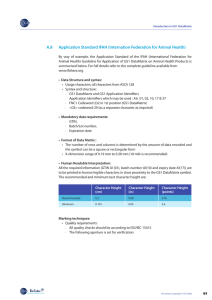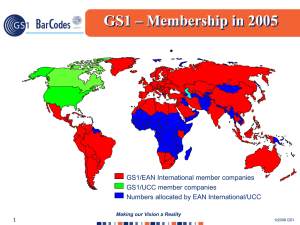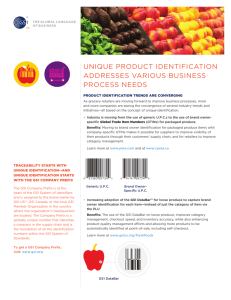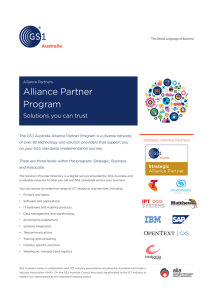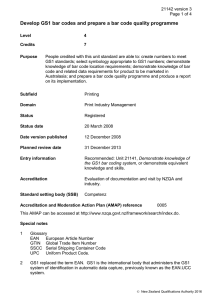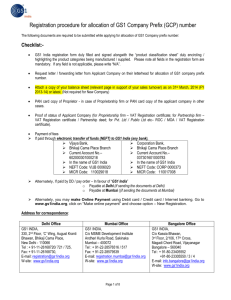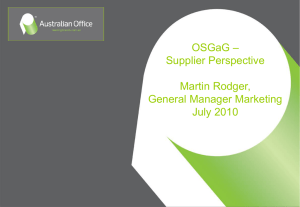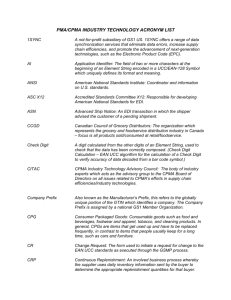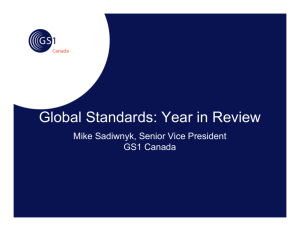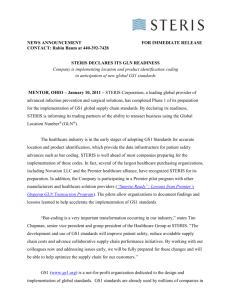GLNs and Sustainable Agriculture
advertisement
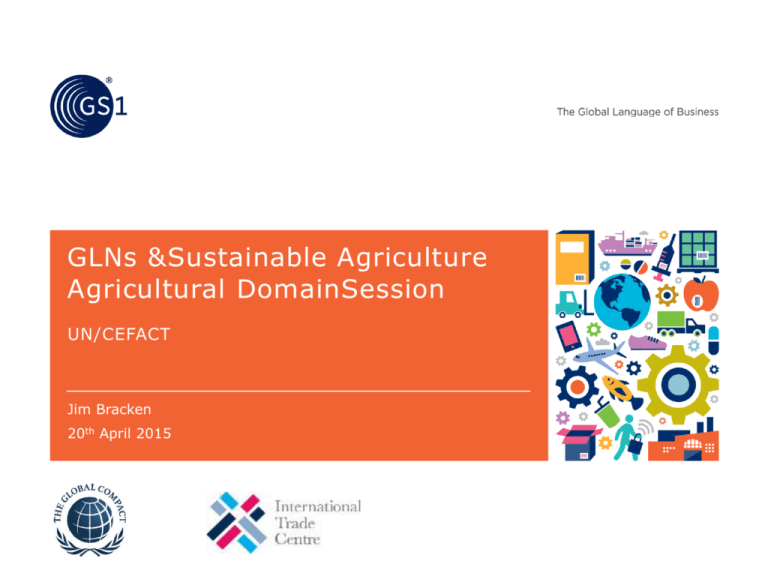
GLNs &Sustainable Agriculture Agricultural DomainSession UN/CEFACT Jim Bracken 20th April 2015 Information is not Power, Sharing Information is the Real Power Agenda Sustainable Agriculture • The problem • The solution • The role of GS1 Standards The Role of GLNs and the UNGC Registry Questions? 2 … within the boundaries of the Planet < 1 Planet 1-4 Planets 4-6 Planets > 6 Planets Source: Happy Planet Index: Ecological Footprint 2013 3 The problem is one of Food Security Did you know that? • 800 million people go hungry every day • c. 33% of all food produced goes to waste or is lost • By 2050, 60% more food will be needed to feed the estimated 9 billion population © GS1 [Country] 2015 4 Food Security is threatened by modern Agriculture Methods • Climate Change poses a major challenge for the Agriculture and Food Sector, food and drink are one of the dominant contributors to climate change • Developments in modern agriculture have led to doubts regarding the long-term viability of current production systems. These developments include heavy reliance on chemical fertilisers, pesticides and herbicides, the destruction of wildlife habitats, environmental pollution and risks to human health. In addition crop yields are falling. © GS1 [Country] 2015 5 Over 400 “standards”/certifications exist © GS1 [Country] 2015 6 Why auditing is not the answer • There is broad agreement that auditing is not the answer, already farmers/producers are complaining of audit fatigue, with some of them facing up to 16 different compliance audits per annum • The FAO estimates the total number of farms worldwide to be c.570 million • It would be impossible to audit millions of farms, hence the consensus on moving to a voluntary reporting model, backed up by spot audits © GS1 [Country] 2015 7 The solution – Climate Sustainable Agriculture based on Good Agricultural Practices • This is the approach being taken by UNGC (United Nations Global Compact) and its partner ITC (The International Trade Centre, a UN/WTO organisation) • UNGC and its partners want farmers to report on a voluntary basis, their compliance with Good Agricultural Practices • UNGC/ITC are embarking on a five year pilot across 20 countries targeting 500,000 farms. To do this each farmer needs a globally unique ID • GLNs and a Global Farm Registry are a vital part of the overall solution © GS1 [Country] 2015 8 Sustainable Agriculture – the role of GS1 Standards • By providing the Unique ID for farms, GS1 will be able to help the Upstream Farming Sector to address traceability and visibility issues • Consumers, retailers, regulators and other stakeholders are all seeking trusted information about the sustainability of products. Traceability, Provenance and Trusted Data are key requirements for every product especially produce • Timely farm-level data is critical to improving output, food safety and compliance with good agricultural practices. Our Traceability Standards and EPCIS can play a major role. For consumers trusted B2C data will be critical. © GS1 [Country] 2015 9 The role of GS1 GLNs and the UNGC Registry UN Global Compact (UNGC) Farm Registry • GS1 is cooperating with the International Trade Centre (ITC) - A joint agency of the UN and the World Trade Organization • ITC Standards Map is an online platform - Enables farms to voluntarily report sustainability certificates • Permitted use of that logo - Enables users to explore and compare over 150 sustainability evaluation programmes • GLN Master Data in this Service will be available to the GS1 GLN Service © GS1 [Country] 2015 11 ITC Sustainability Programmes ITC Standards Map Farmers ~150 Sustainability Programmes / Certificates © GS1 [Country] 2015 12 UNGC Farm Registry Service Farm (Farmer) identified by GLN ITC Standards Map Synchronized Data Farmer needs GLN GS1 UNGC Farm Registry Name Role Address Contact GS1 UNGC GLN Allocator © GS1 [Country] 2015 13 Thank You! Questions? © GS1 [Country] 2015 14
